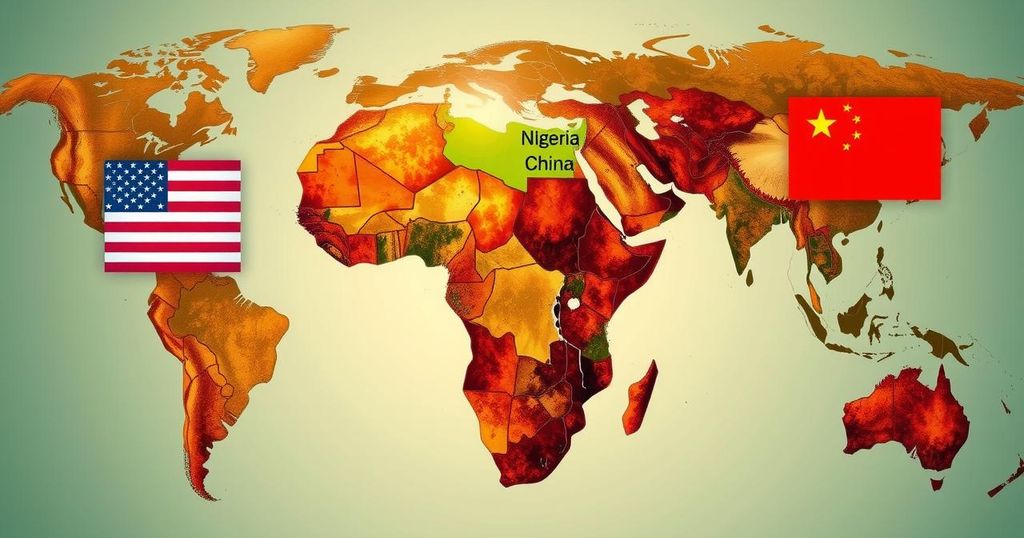The Awash region has experienced a 4.6 magnitude earthquake, heightening concerns about increasing seismic activity. Recent tremors have alarmed residents and prompted cautionary advisories from authorities. Experts attribute the seismic events to tectonic movements and call for public preparedness and ongoing monitoring of the situation.
On October 23, 2024, the Awash region of Ethiopia experienced its second earthquake of the day, measuring 4.6 on the Richter scale and occurring at 6:20 p.m. This tremor was widely felt across Addis Ababa, prompting concerns regarding the heightened seismic activity in the area. Recent reports indicate that the Awash Fentale district has been shaken by five earthquakes within a short span, resulting in alarm among local residents and cautionary advisories from various authorities. State officials have urged individuals to remain vigilant and adhere to safety protocols issued by the Ethiopian government, especially since tremors can be felt even in the capital city. According to the Geophysics, Space Science, and Astronomy Institute at Addis Ababa University, the strongest earthquake recorded was at 6:13 p.m. with a magnitude of 4.6. Professor Atalay Ayele, the Head of the Sociology Department, indicated that while tremors were significant, their relatively low magnitude does not pose a major threat to the populace. Professor Ayele emphasized the geological context of the Awash Fentale region, which is known for its tectonic activity due to its proximity to the East African Rift. This geological setting inherently increases the frequency of low-magnitude earthquakes, which can cause unnecessary panic among residents not familiar with seismic activity. He also pointed out the importance of continuous monitoring to detect any possible upticks in earthquake frequency. Furthermore, Gebretsadiq, the Head of the Geology Department at Samara University, elaborated on the seismic events, suggesting that these earthquakes are likely a consequence of magma movement beneath the Earth’s surface, which exerts pressure on surrounding rock formations. He underlined the significance of the area’s volcanic history in understanding the recent seismic disturbances. Despite the increase in earthquakes, Gebretsadiq cautioned against predicting the timing or recurrence of these seismic events due to the complexities involved in geological processes. He highlighted the necessity for heightened public awareness regarding earthquake preparedness. In light of these developments, local geological institutions and the Ethiopian government are collaborating to monitor seismic actions and inform the public about safety measures. Residents are encouraged to stay informed about emergency protocols, secure heavy furniture, and identify safe places for protection during earthquakes. Moreover, understanding that small earthquakes can lead to structural damage underscores the need for preparedness in the area. In summary, the recent seismic activities in the Awash Fentale region have illustrated the area’s dynamic tectonic environment, sparking collaborative discussions among geologists regarding the implications of these tremors for local populations. While no immediate threats are evident, ongoing vigilance and informed action are essential for ensuring safety in this tectonically active zone.
The Awash region in Ethiopia is geographically situated near the East African Rift, a significant tectonic boundary known for its geological activity. The region’s susceptibility to earthquakes is rooted in its geological characteristics, which include interaction between tectonic plates and volcanic activity. Recent reports indicate an increasing frequency of earthquakes, raising concerns among the population and prompting local authorities to provide safety guidelines and monitoring efforts. There is a recognized need for public education on earthquake preparedness, as many residents may be unfamiliar with the protocols necessary in such situations.
In conclusion, the recent surge in seismic activity in the Awash region, particularly the occurrence of a 4.6 magnitude earthquake, has highlighted the need for vigilance among residents. Authorities emphasize the importance of earthquake preparedness, urging communities to secure their environments and stay informed regarding safety measures. Ongoing monitoring and research by geological institutions will be critical in understanding this dynamic situation and ensuring the safety of local populations.
Original Source: addisinsight.net




